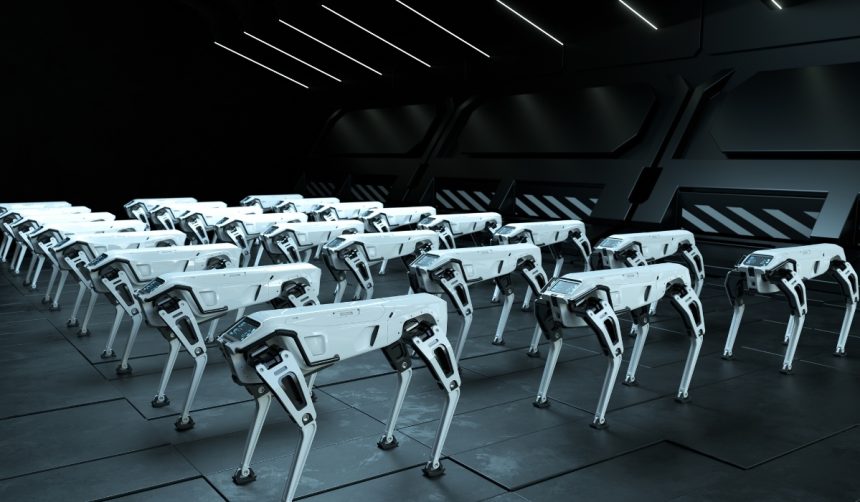Technological advancements in healthcare continue to move forward, with AI-powered robots increasingly becoming part of hospital operations. Ubitus, known for its cloud and AI solutions, has joined with MacKay Memorial Hospital to implement three distinct medical robots equipped with advanced NVIDIA hardware and software. These robots have been designed to address specific practical needs: guiding patients, supporting logistics, and monitoring environments. The blend of these technologies aims to assist healthcare providers, reduce various routine burdens, and potentially improve the patient experience. New collaborative ventures between tech companies and healthcare providers are raising questions about integration, workflow impact, and future applications.
Comparable projects in previous years focused primarily on single-purpose automation such as robotic delivery or disinfection tasks. Reports from earlier initiatives showed slower adoption, partly due to high costs, limited interaction features, and insufficient adaptability to real hospital settings. However, the current deployment involves multi-modal, AI-powered devices with enhanced simulation capabilities thanks to platforms like NVIDIA Omniverse and Isaac Sim. This indicates a shift from isolated robotic solutions to more integrated systems adjusted for daily use in complex hospital environments.
How do these robots enhance hospital operations?
The collaboration between Ubitus and MacKay Memorial Hospital resulted in three types of robots: an autonomous mobile robot (AMR), a humanoid robot, and a quadruped robot. Bundled with NVIDIA’s Isaac GR00T N1, Jetson AGX Orin, and other proprietary AI tools, each machine targets a distinct set of tasks. The AMR offers services like patient navigation, companionship, and registration assistance, aiming to streamline non-clinical interactions. The humanoid robot, enabled by dual-arm manipulation, contributes to internal logistics through specimen and material transport. Meanwhile, the quadruped—a four-legged robot—conducts inspections in challenging areas, detecting hazards and relaying environmental data.
What technologies support these intelligent systems?
NVIDIA technologies play a central role in the project. The development process used NVIDIA Omniverse and Isaac Sim for virtual simulation, which allowed comprehensive testing before any physical deployment. This step reduced risks, lowered costs, and quickened integration. In operation, NVIDIA Blackwell GPUs, Llama 4 large language model, and NVIDIA Riva facilitate robust, multilingual dialog, while the NVIDIA ACE digital human technology delivers emotionally responsive, customizable virtual assistants for patient interaction. Staff members reported improved workflow, suggesting these features are practical rather than speculative.
Why focus on both technology and human experience?
By targeting both operational efficiency and patient engagement, the partnership addresses multiple needs. The inclusion of a digital assistant that leverages conversational AI aligns with efforts to make interactions more natural and supportive for patients. According to Dr. Chia-Shiang Lin, president of MacKay Memorial Hospital,
“This partnership not only enhances patient service quality but also optimizes internal workflows and safety management.”
Hospital management and Ubitus reported that clinical staff found the robots reduced workload, supporting a case for wider adoption in future expansions to areas like emergency care and rehabilitation.
Recent trends in hospital robotics demonstrate growing interest in systems that go beyond elemental automation, instead aiming for adaptive, user-friendly functionality. Ubitus’s offerings—including its UbiGPT, UbiONE, and UbiArt solutions—underline this multi-faceted approach, providing not only physical robotics but also AI-powered language, avatar, and image processing. With continued collaboration with NVIDIA and MacKay Memorial Hospital, Ubitus plans to broaden the horizons for smart healthcare, emphasizing streamlined workflows and adaptable technology integration.
Introducing AI-powered robotics into healthcare settings presents potential efficiencies and improvements, but also requires careful attention to integration with existing practices. For hospital administrators, the lessons from this deployment highlight the importance of simulation-driven development, multi-modal interaction, and human-centric design to balance technical functionality with patient experience. As the partnership proceeds, assessing impacts on clinical care, training requirements, and operational disruptions will be vital for long-term adoption and effectiveness. Hospitals considering similar solutions might benefit from focusing on pilot programs that test adaptability in day-to-day use, ensuring any AI-robotics platform fits the unique needs of their environment.










